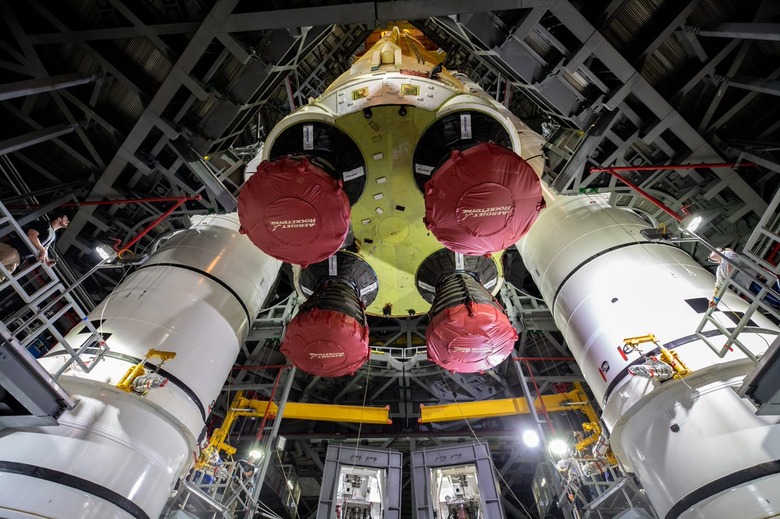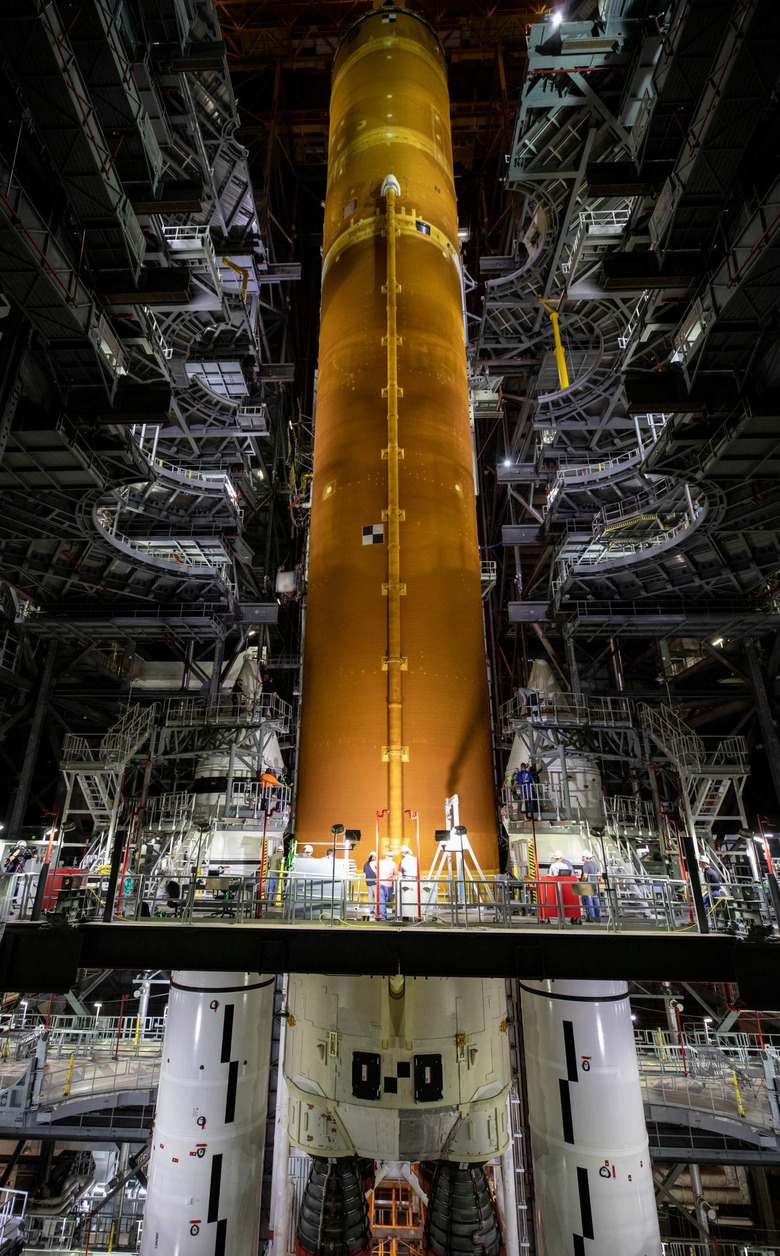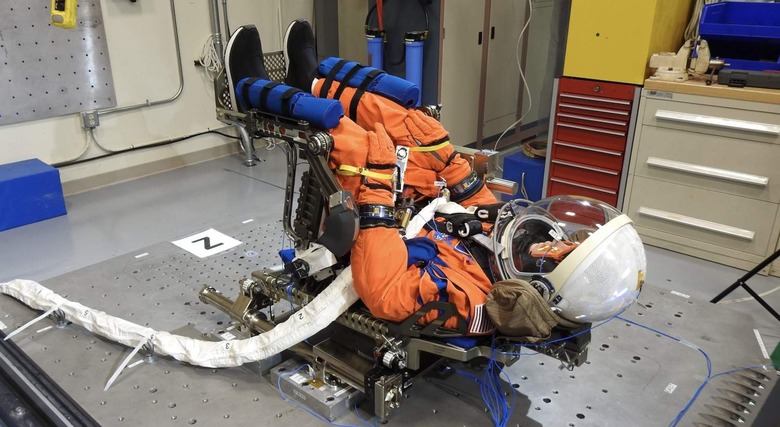NASA Shares Astonishing Photos Of Huge SLS Rocket And Its Artemis I Passenger
Big space missions need a big rocket, and NASA's huge Space Launch System (SLS) certainly fits the bill. While we knew the rocket – which NASA plans to use for the Artemis mission to return astronauts to the Moon – was big, standing 365 feet high, nothing quite describes seeing the main sections in place.
The core stage alone contributes 212 feet of that wild height, and even without fuel weighs over 188,000 pounds. Yesterday, NASA shared images of it standing upright on the mobile launcher, managing to make the similarly-vast High Bay 3 of the Vehicle Assembly Building at NASA's Kennedy Space Center facility look pedestrian.
It's not an easy process, piecing together a rocket. SLS' core stage is mounted to twin solid rocket boosters, at the engine and the intertank sections. They'll work along with its own four RS-25 engines, as well as support the payload, upper stage, and crew vehicle. Five overhead cranes are used in the Vehicle Assembly Building to carefully lower everything into place.
The four RS-25 engines alone are capable of more than 2 million pounds of thrust. With the boosters contributing their power, meanwhile, there's more than 8.8 million pounds on tap.

Even though it already looks impressive, the SLS is going to get even bigger. The launch vehicle stage adapter comes next – linking the core stage to the interim cryogenic propulsion stage, or ICPS – and then finally the ICPS itself is added.

All this is in aid of getting Artemis I ready for its first test flight, of the rocket combined with the Orion spacecraft. There won't be a human crew onboard when that happens, with NASA taking no chances as it prepares for the eventual Artemis II Moon mission.
What there will be, though, is NASA's Artemis I Manikin, or "Moonikin" as the space agency is referring to it. That's basically a sensor-packed dummy which will be occupying the commander's seat aboard Orion. It'll be wearing the first-generation Orion Crew Survival System suit, while inside there'll be two radiation sensors.

Further sensors in the seat itself will track acceleration and vibration. NASA expects occupants of the cabin to be subject to as much as 2.5x the force of gravity during the SLS' ascent, and then 4x at two different points during the planned reentry profile. More sensors in Orion will compare vibration and acceleration between the upper and lower seats, and then data from all of them will be used to gauge the impact when Orion later splashes down in the Pacific Ocean.
It's a well-tested manikin. Before it scored tickets on Artemis I's first flight, the same dummy was used in a whole run of Orion vibration tests to ensure its sensors would accurately reflect what humans aboard would eventually feel. What it doesn't have, currently, is a name, though NASA plans to hold a contest starting June 16 for suggestions as to the official name of the Moonikin.
The final winner will be confirmed on Tuesday, June 29. Artemis I is currently scheduled to launch, meanwhile, on November 4, 2021.
